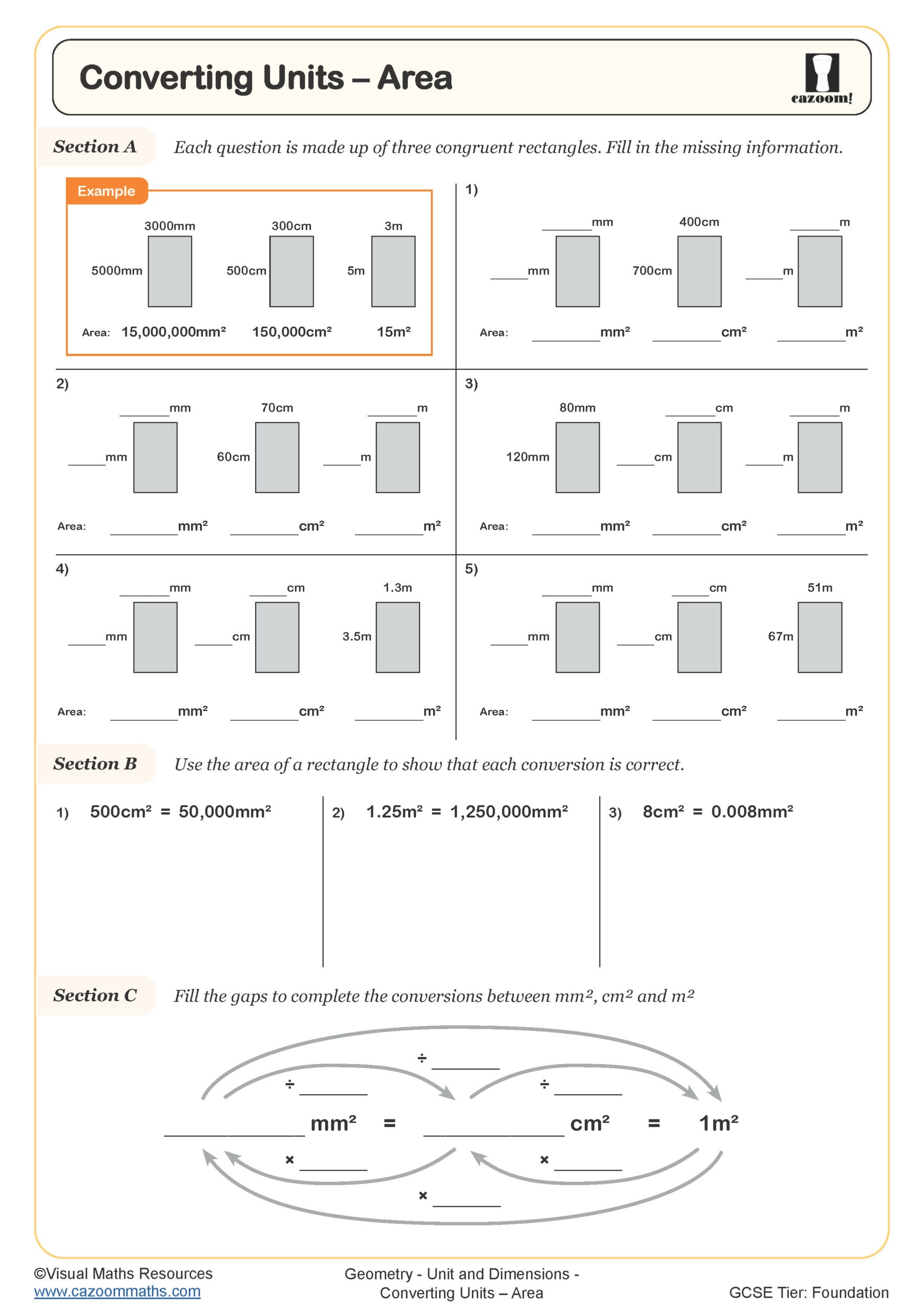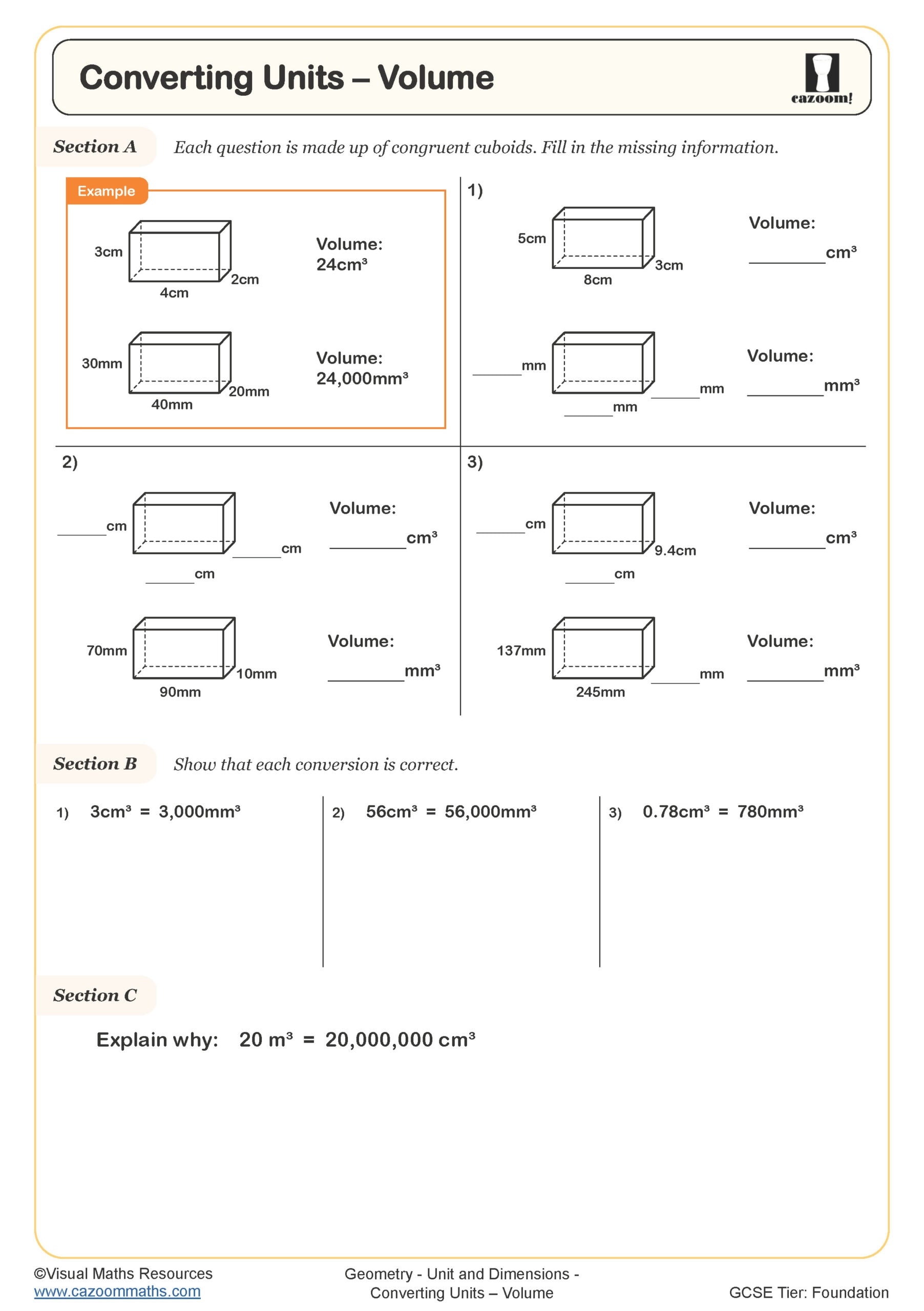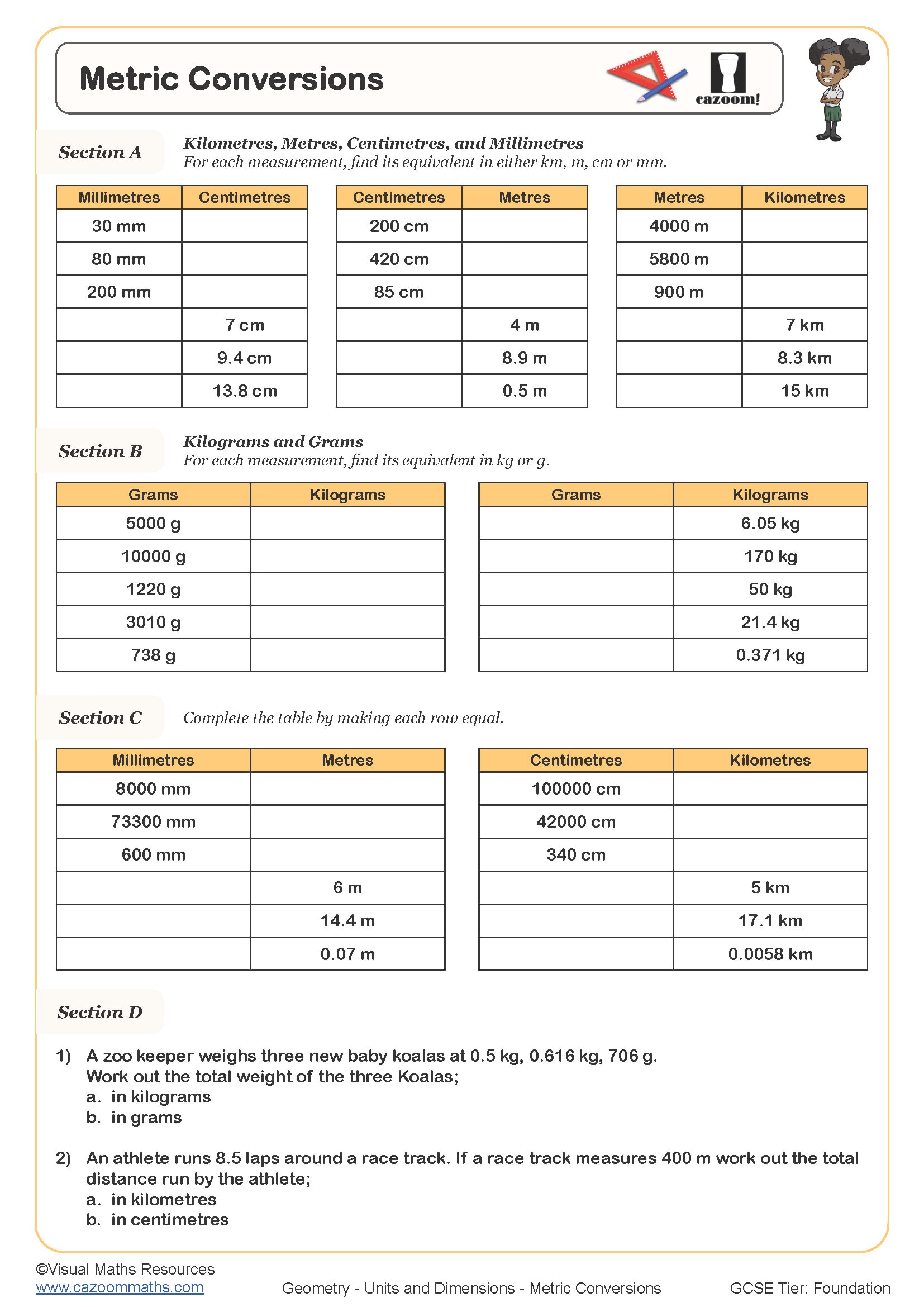Year 8 Units and Dimensions Worksheets
Tired of Mistakes in Geometry? Our Printable Year 8 Units and Dimensions Resources Are the Fix
Mastering unit conversions in Year 8 fundamentally changes how students approach quantitative problems across all subjects, particularly when they encounter unfamiliar measurement systems or need to verify calculation reasonableness. The cognitive leap from memorising conversion facts to understanding dimensional relationships marks a crucial developmental milestone that separates procedural knowledge from genuine mathematical reasoning. Students who internalise these principles early demonstrate superior performance in physics calculations, chemistry equations, and engineering challenges where dimensional analysis becomes non-negotiable. Regular exposure to varied conversion scenarios trains the brain to recognise patterns between seemingly unrelated units, developing the mental flexibility essential for advanced mathematics. This deep understanding transforms measurement from a mechanical process into an intuitive skill that students apply automatically when interpreting data or solving complex problems.
Specific learning benefits include:
• Master the metric system relationships comprehensively
• Develops estimation skills for reasonableness checks
• Strengthens decimal and fraction manipulation abilities
• Connects abstract maths to scientific notation
• Improves accuracy in compound unit calculations
• Enhances spatial reasoning through dimensional understanding
• Prepares groundwork for A-level sciences
Year 8 Measurement Conversion Skills: From Basic Units to Complex Applications
These worksheets guide learners through progressively challenging tasks that mirror authentic mathematical development, moving from concrete measurement tasks to pictorial representations and finally to abstract conversion formulae. Beginning with familiar single-unit conversions, students gradually encounter compound measurements and rates that require multiple transformation steps. Each resource includes fully worked solutions that demonstrate efficient strategies and common pitfalls avoidance techniques that experienced mathematicians use instinctively.
The worksheets in this collection include:
• Metric Conversions — develops fluency across length, mass and capacity units
• Converting Units - Area — explores square measurements and scaling relationships systematically
• Converting Units - Volume — builds cubic unit understanding through practical contexts
Discover the Secret to Faster Geometrical Calculations With KS3 Units and Dimensions Worksheets
Teachers consistently choose these resources because they eliminate preparation time whilst maintaining pedagogical excellence through carefully calibrated difficulty progressions. The differentiated structure enables one worksheet to meet the needs of the entire class by providing accessible opening questions for struggling students and challenging concluding problems that require gifted mathematicians to develop creative thinking about dimensional connections. The combination of standardised formatting and organised problem progression in visual clarity systems enables students to recognise different question types more quickly, which decreases their mental effort. The answer sheets provide solutions that demonstrate multiple methods to solve problems while explaining which techniques work best for different types of problems. The complete system helps teachers identify student mistakes during grading time, and students can use it for independent self-assessment of their knowledge beyond basic number verification.
Practical Applications: Where Year 8 Students Use Units and Dimensions Daily
Mathematical unit conversion permeates everyday decision-making, from calculating journey times to understanding nutritional information on food packaging.
• Planning travel routes using different speed measurements and time zones
• Converting recipe quantities when cooking for different group sizes
• Understanding energy consumption on household electricity bills
• Comparing international product sizes and weights when shopping online
• Calculating material requirements for design technology projects
• Interpreting weather data using various temperature and pressure scales
• Analysing sports performance statistics across different measurement systems
• Estimating costs using currency conversions for international purchases


